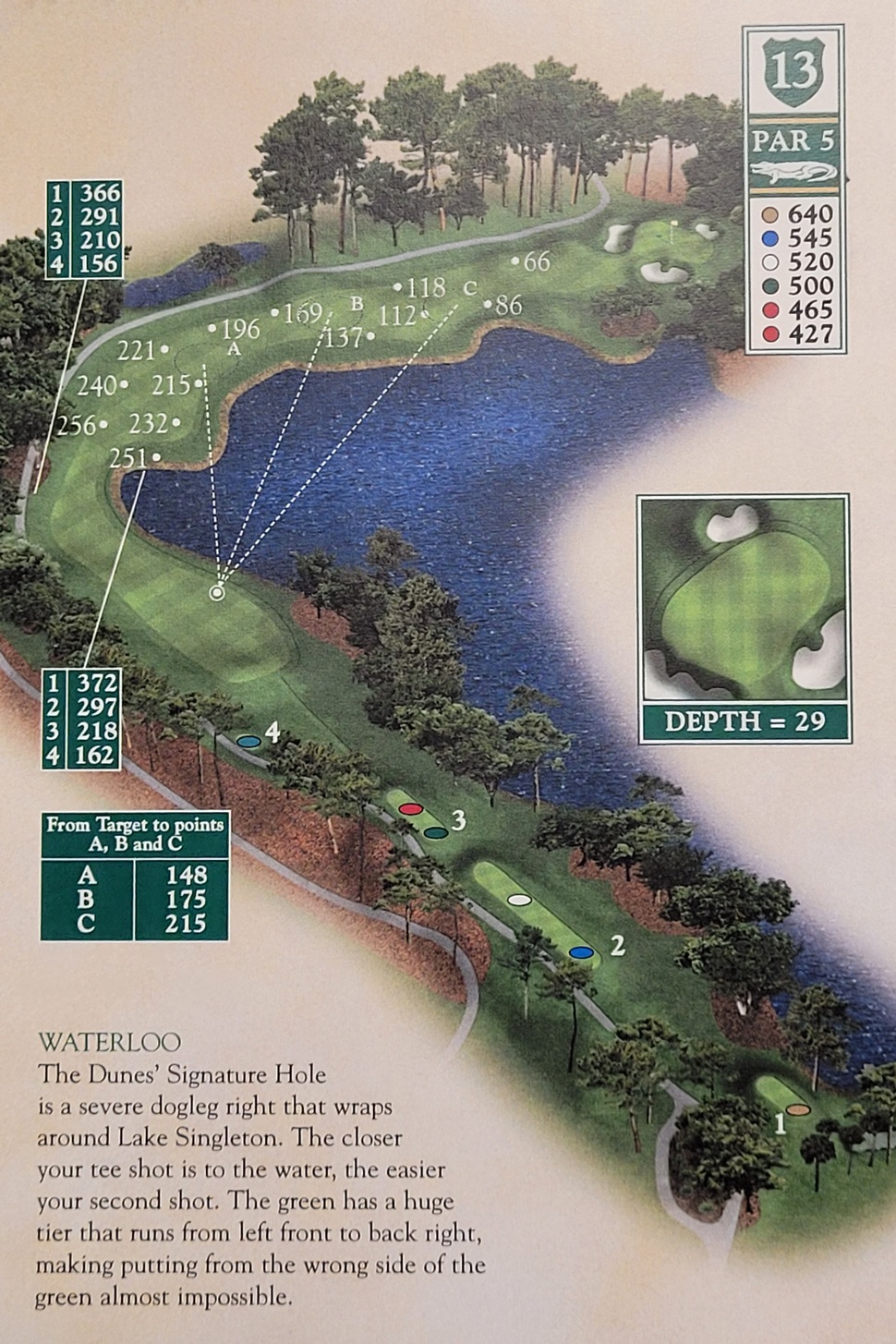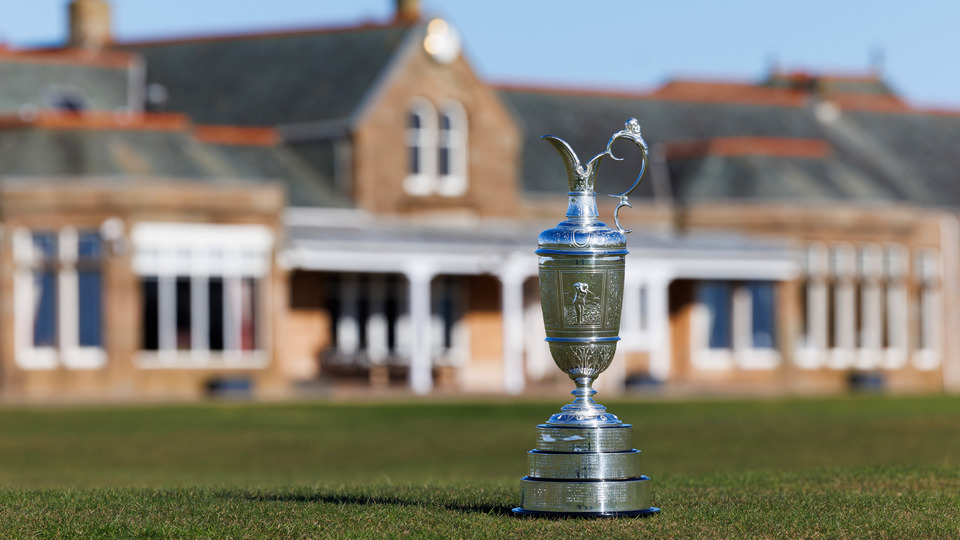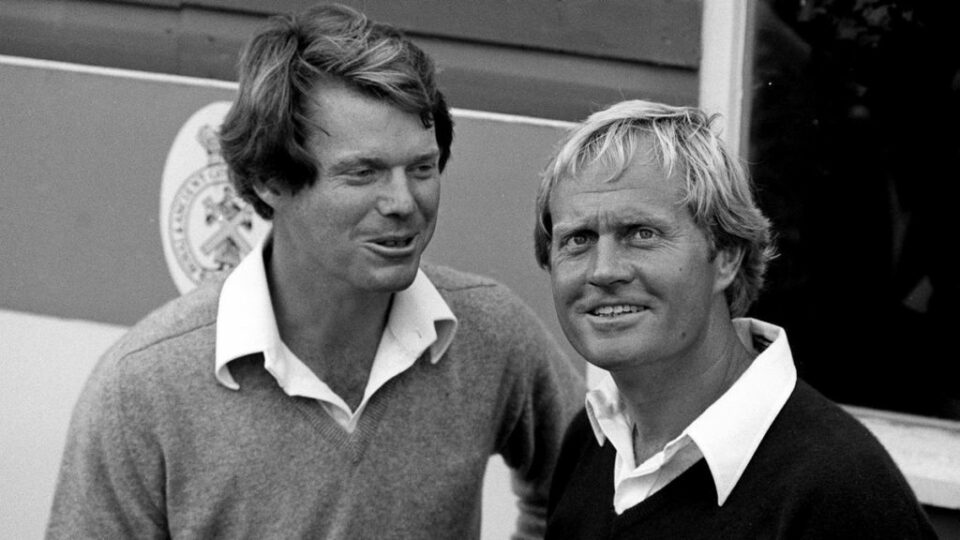13th hole / 620 Yards / Par-5
"Waterloo"
Architect: Robert Trent Jones, Sr. (1948)
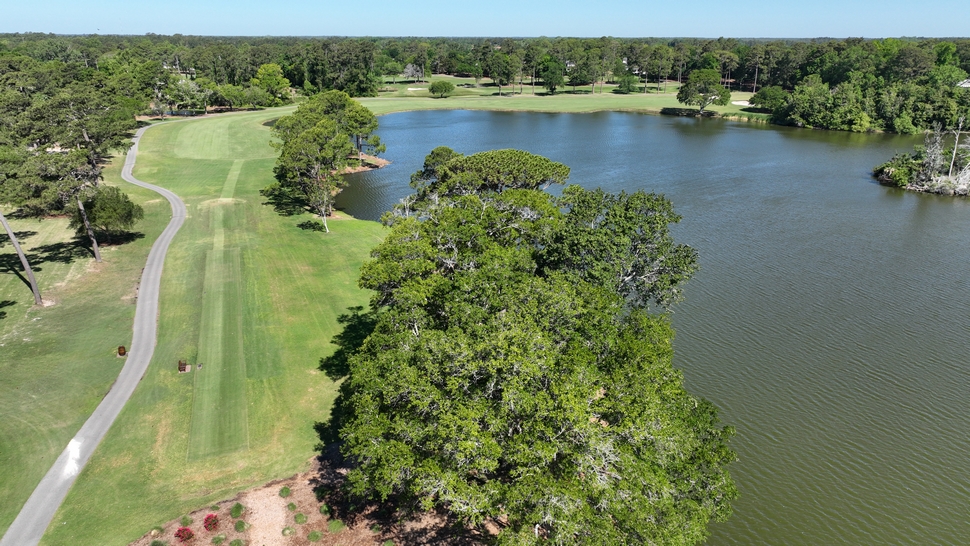
When Robert Trent Jones, Sr. died at 93 in 2000, a personal curtain came down but a legacy in reshaping the impact golf architecture has on the broader golf community remains firmly in place.
The Jones impact was captured by paraphrasing the comment made famous by the former British Empire -- "The sun never sets on a Robert Trent Jones course."
Television has clearly magnified the growing stature of certain key courses around the world. But there are other notable courses that clearly remain venues of prominence.
Among the most impactful of Trent's designs came in 1948 when the Dunes Golf & Beach Club opened. What was among the earliest of golf courses in the Myrtle Beach, SC area became the launching pad in opening the door to dozens of golf courses accelerating in rapid fashion covering a broader area encompassing both South and North Carolina.
The club was updated in recent years by Trent's son Rees and can be stretched to over 7,400 yards as a par-72 layout. The course rating from the championship tees is 76.1 with a slope of 148. In 1962, The Dunes hosted the prestigious U.S. Women's Open and other noted professional events have been played there.
Although the Dunes is a private club the wherewithal to gain access remains permitted at certain intervals under certain stipulations.
Jones believed golf holes should provide ultimate choices for golfers to ponder and then fashion the execution necessary for success.
The par-5 13th is aptly named "Waterloo" because like Napoleon one can either swim figuratively or have one's golf ball drown permanently.
The hole is shaped like an inverted "C". Golfers arrive at the teeing area and see a flat landing area. In the distance to the far right is a putting green and one is quickly able to discern the imposing nature of Lake Singleton.
The immediate challenge is placing one's tee shot as near as possible to the Lake as you dare. Length alone is not the critical dimension -- placement matters more so.
The fairway landing area tapers down considerably as the optimum tee shot is anywhere from 220-240 yards.
The second shot is where golfers have to realistically calculate their personal skill level. The hole turns right and the Lake is a constant menacing presence. Golfers intent on cutting off as much as possible have to always be mindful that the slightest miscalculation will mean hearing the lyrics of the famed 1958 Bobby Darin song -- "Splish Splash."
The diagonal carry mandates sensible execution. However, the mandate of the words "water" and "forced carry" can quickly emasculate golfers inflicting mental paralysis and likely scorecard ruin.
The hole received a major boost in attention when in 1966 the famed golf writer Dan Jenkins selected "The best 18 golf holes in America" and the 13th was among them.
Jenkins quipped that "if a man plays the 13th hole at The Dunes Golf and Beach Club enough, he will eventually lose every golf ball he owns and perhaps perish by alligator's bite."
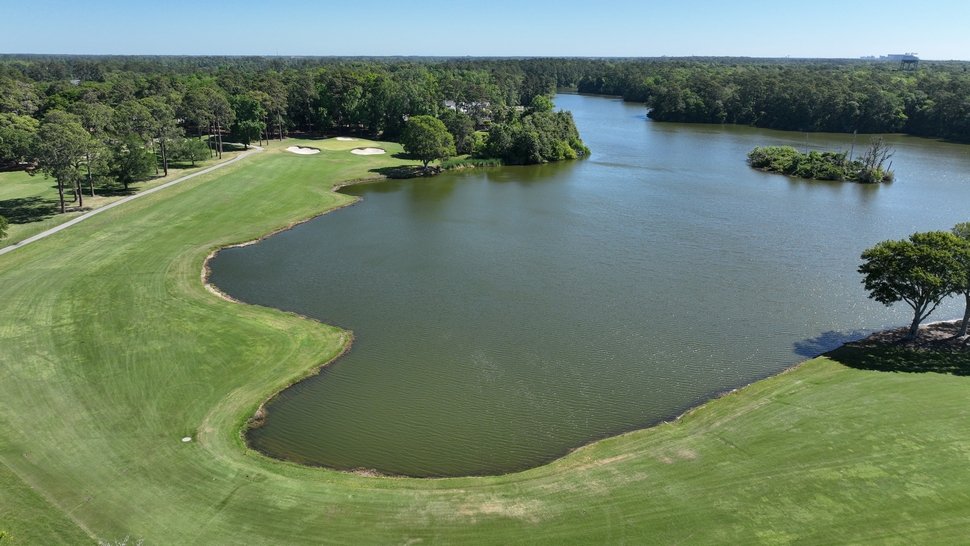
What's often not highlighted enough is the remaining challenge even after crossing the Lake. The green's square footage is 6,250 feet but it poses a number of internal riddles for golfers to solve.
"When you get across the water, the game really begins because a two-tiered green surrounded by three bunkers awaits," said head professional Dennis Nicholl. "Just because you got over the lake, it doesn't mean you are going to make par."
Looking down from the heavens is Trent Jones. Smiling at the various escapades he so smartly created. The 13th remains front and center as one of his truly masterful designs.
***
For more info go to:
